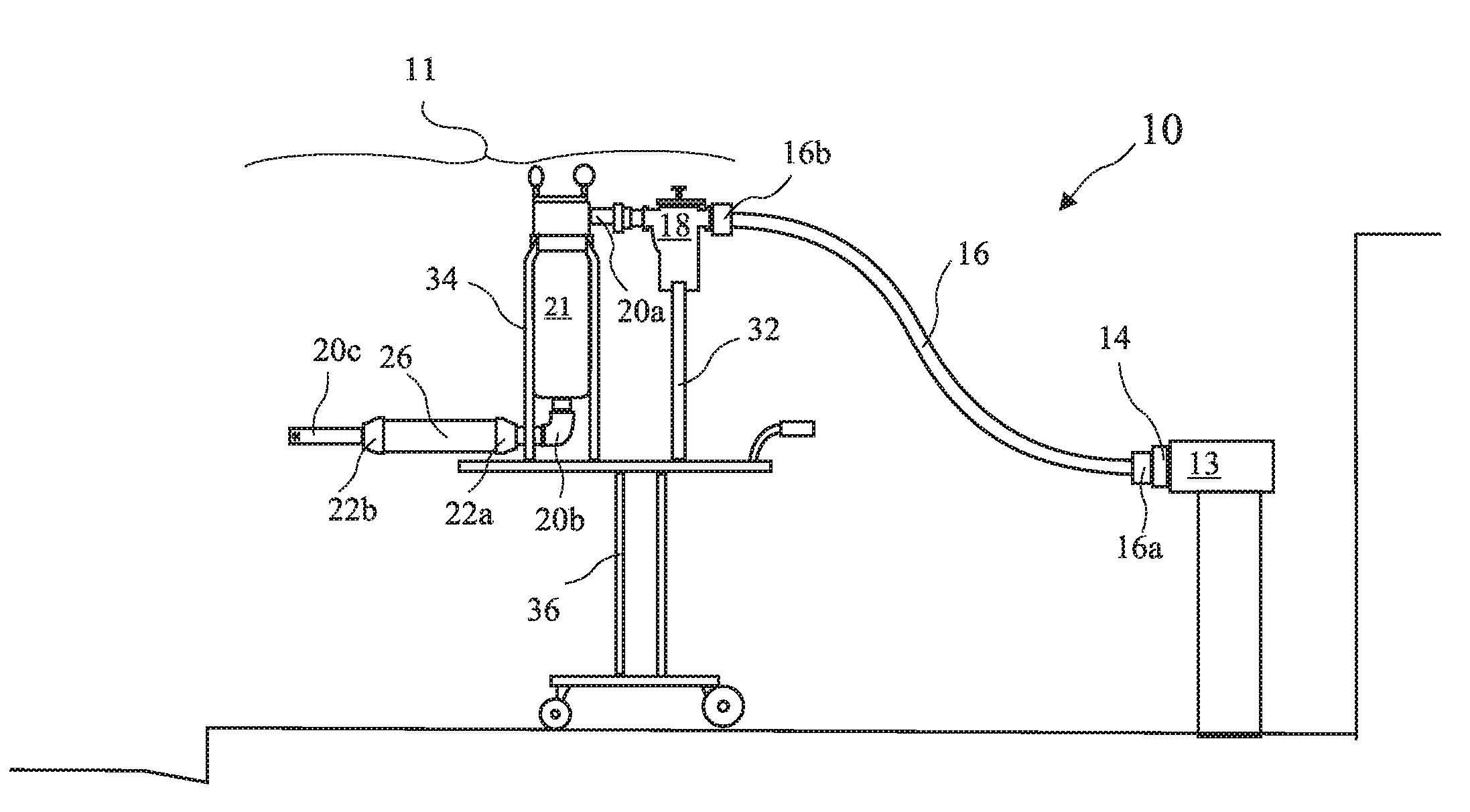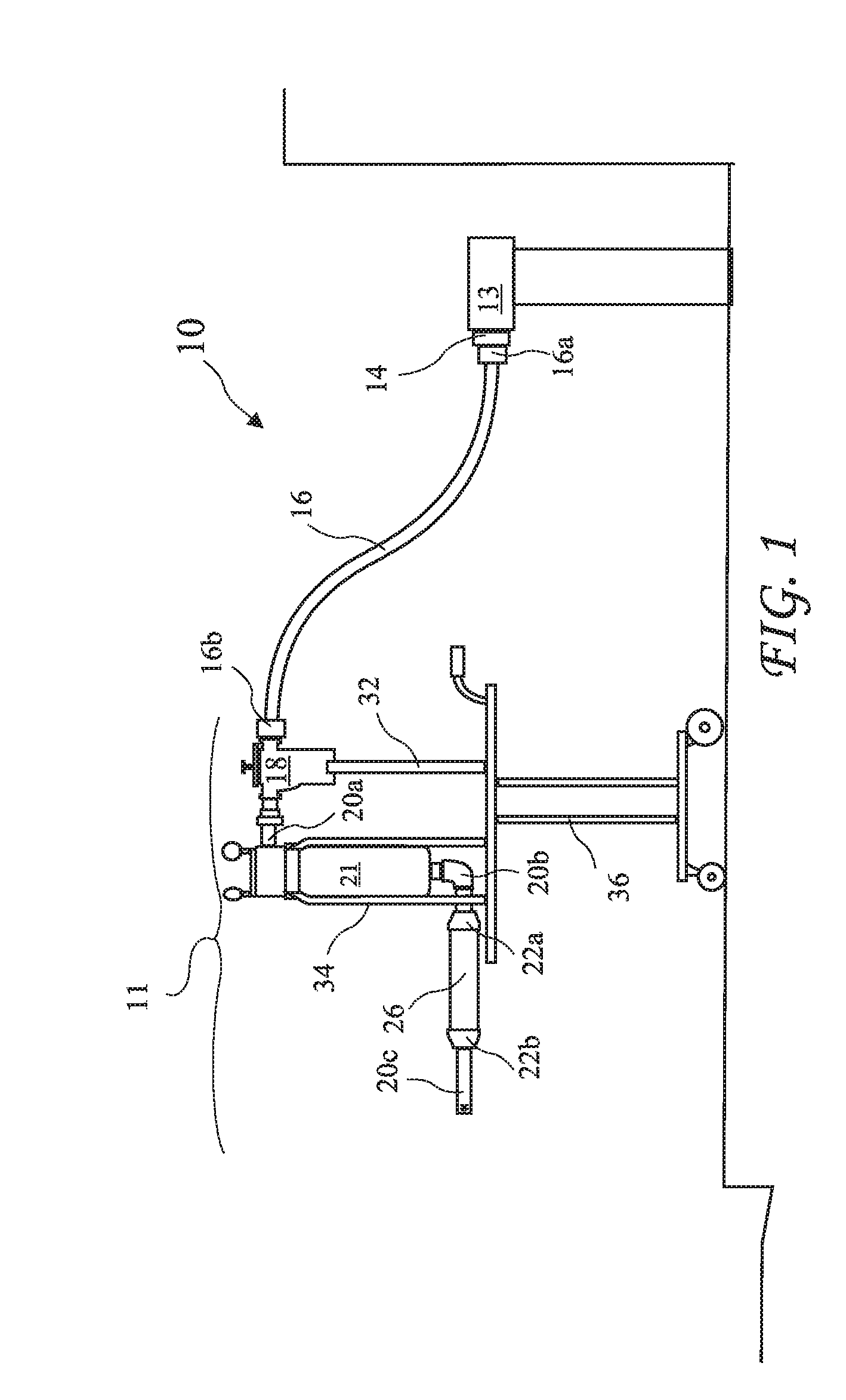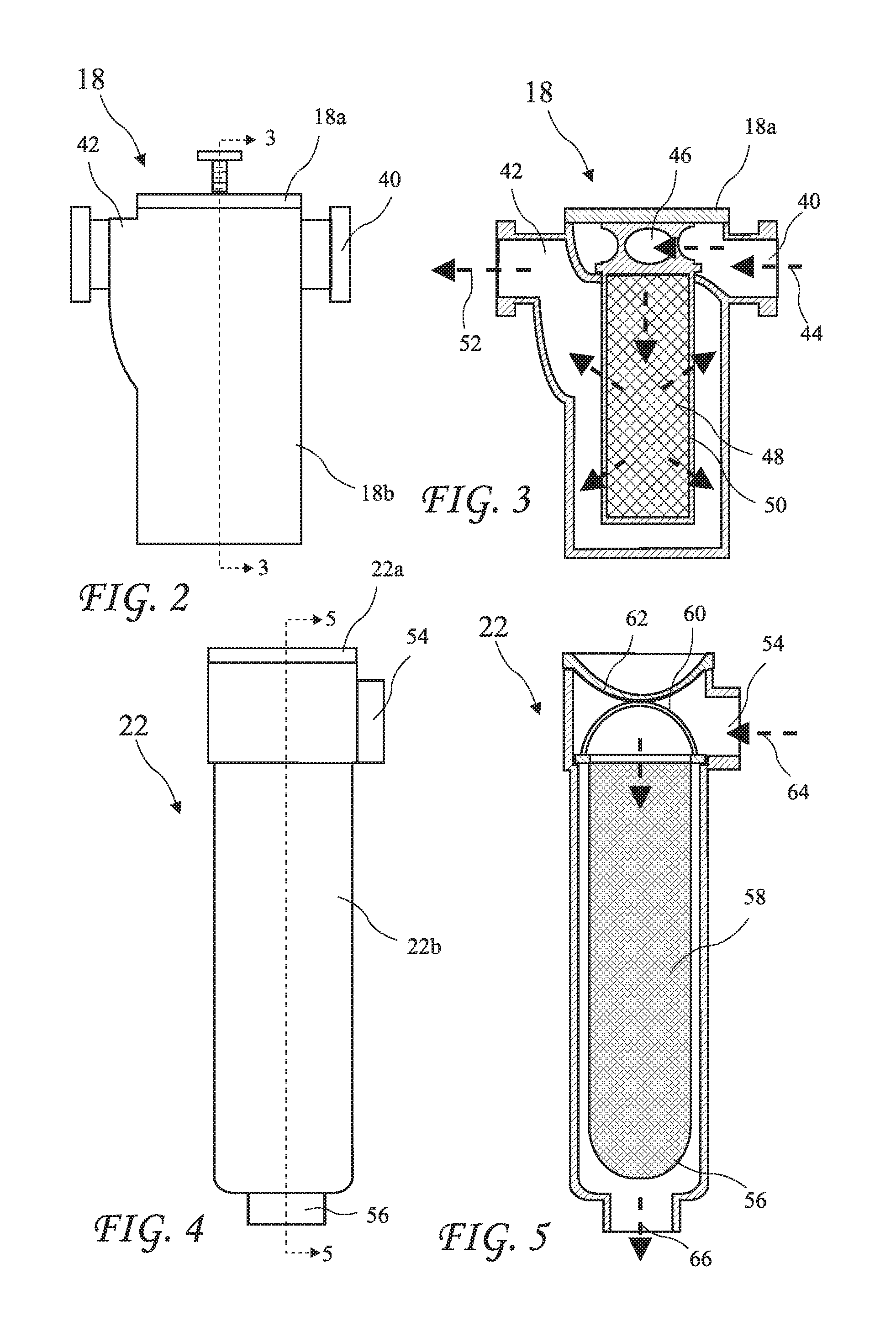Waste water filtering system
a filtering system and waste water technology, applied in the direction of filtration separation, multi-stage water/sewage treatment, separation process, etc., can solve the problems of reducing the quality of water in such systems, contaminated, stagnant, stale, foul odor,
- Summary
- Abstract
- Description
- Claims
- Application Information
AI Technical Summary
Benefits of technology
Problems solved by technology
Method used
Image
Examples
Embodiment Construction
[0036]The following description is of the best mode presently contemplated for carrying out the invention. This description is not to be taken in a limiting sense, but is made merely for the purpose of describing one or more preferred embodiments of the invention. The scope of the invention should be determined with reference to the claims.
[0037]A waste water filtering system 10 according to the present invention is shown connected to a waste water source comprising a Fire Department Connection (FDC) 13 in FIG. 1. The waste water filtering system 10 includes a hose 16 and a filtering suite 11. The hose 16 is a clear hose to allow viewing of waste water passing through the hose 16, and is preferably a clear rubber hose. The hose 16 is connected to the FDC 13 using a swivel connection 16a and to the filter suite using a swivel fitting 16b. An FDC outlet 14 resides between the swivel connection 16a and the FDC 13 to position a rod 26 (see FIG. 11) to hold a clapper valve in the FDC 13 ...
PUM
| Property | Measurement | Unit |
|---|---|---|
| Length | aaaaa | aaaaa |
| Length | aaaaa | aaaaa |
| Length | aaaaa | aaaaa |
Abstract
Description
Claims
Application Information
 Login to View More
Login to View More - R&D
- Intellectual Property
- Life Sciences
- Materials
- Tech Scout
- Unparalleled Data Quality
- Higher Quality Content
- 60% Fewer Hallucinations
Browse by: Latest US Patents, China's latest patents, Technical Efficacy Thesaurus, Application Domain, Technology Topic, Popular Technical Reports.
© 2025 PatSnap. All rights reserved.Legal|Privacy policy|Modern Slavery Act Transparency Statement|Sitemap|About US| Contact US: help@patsnap.com



